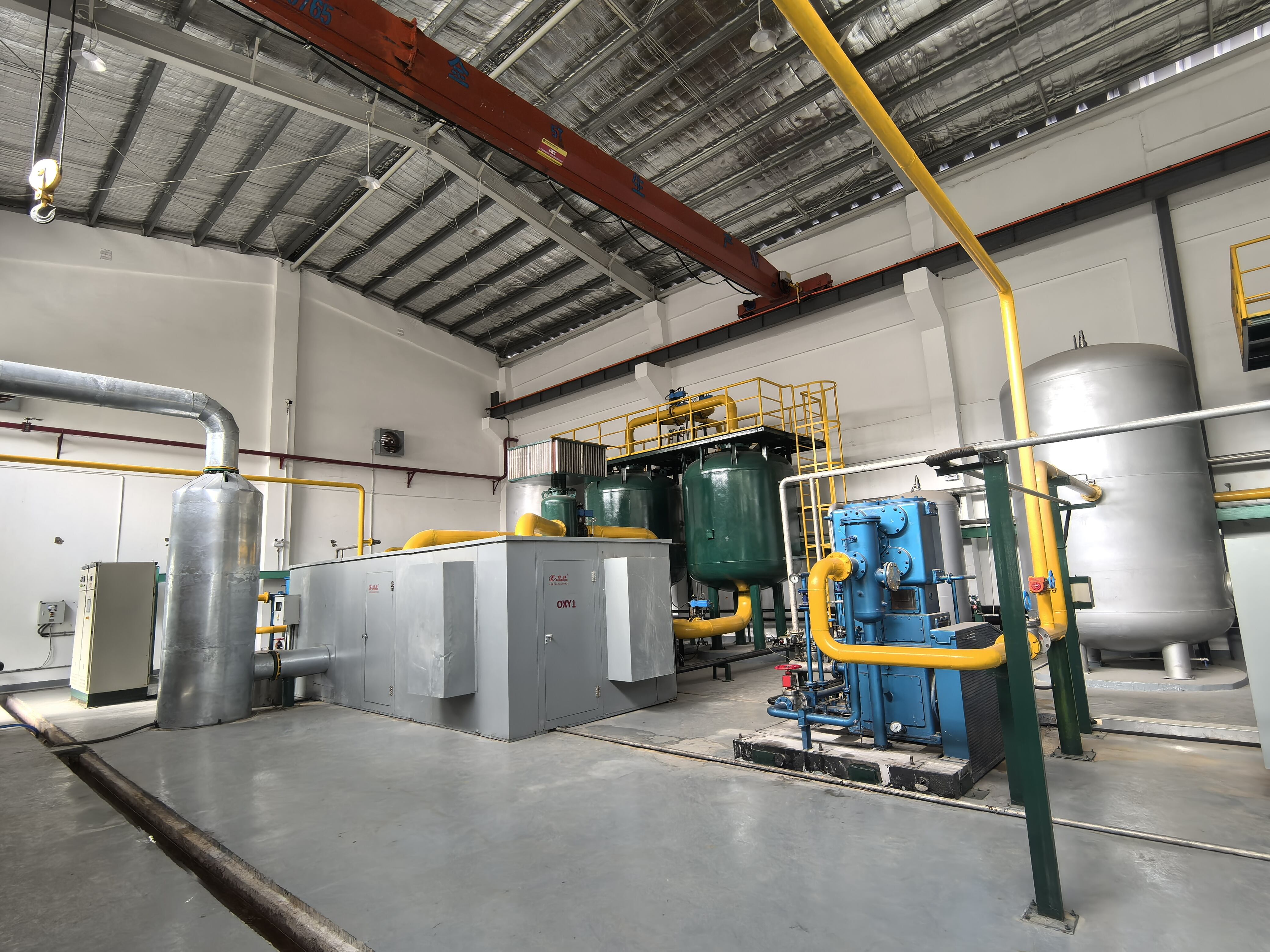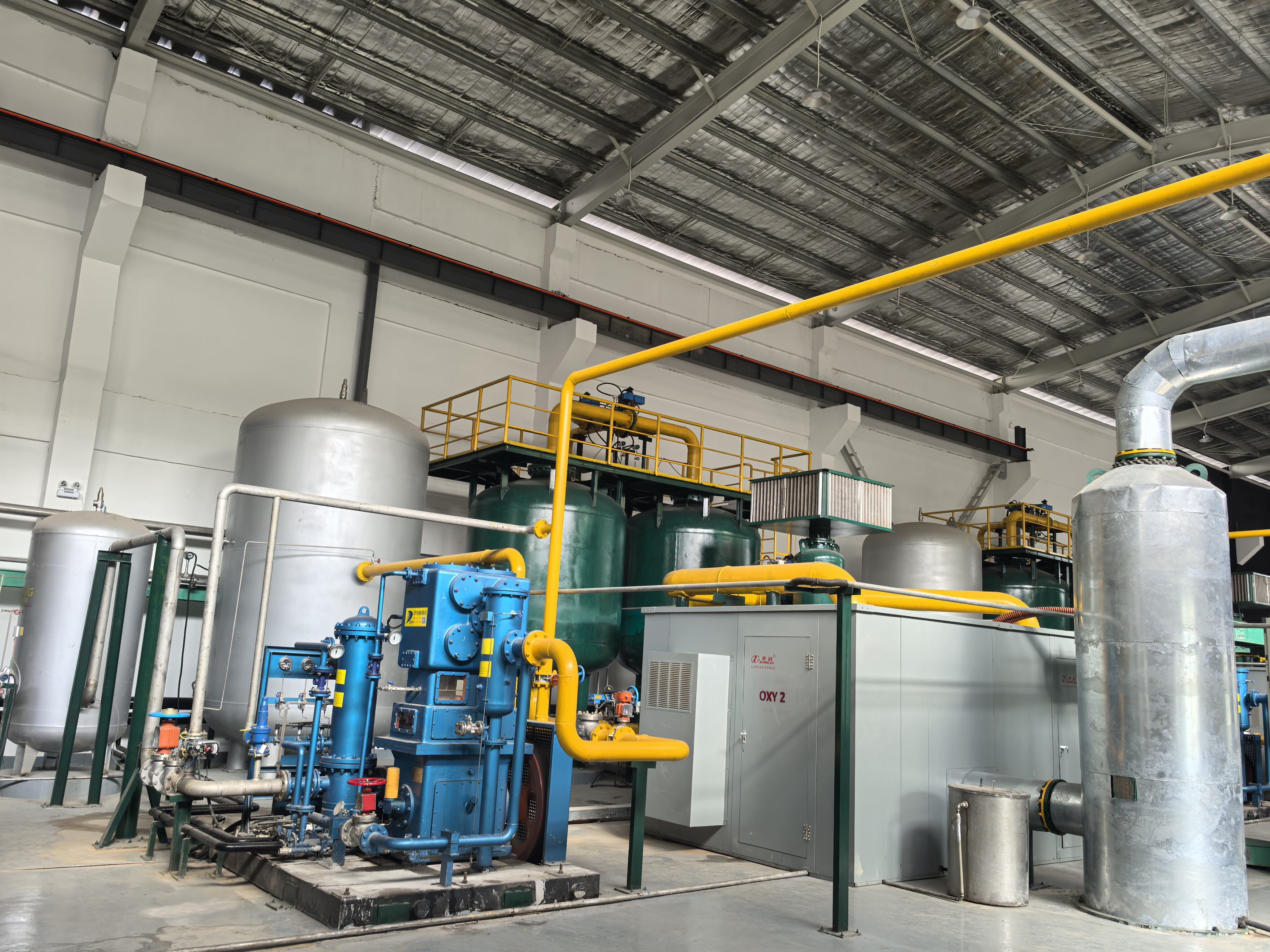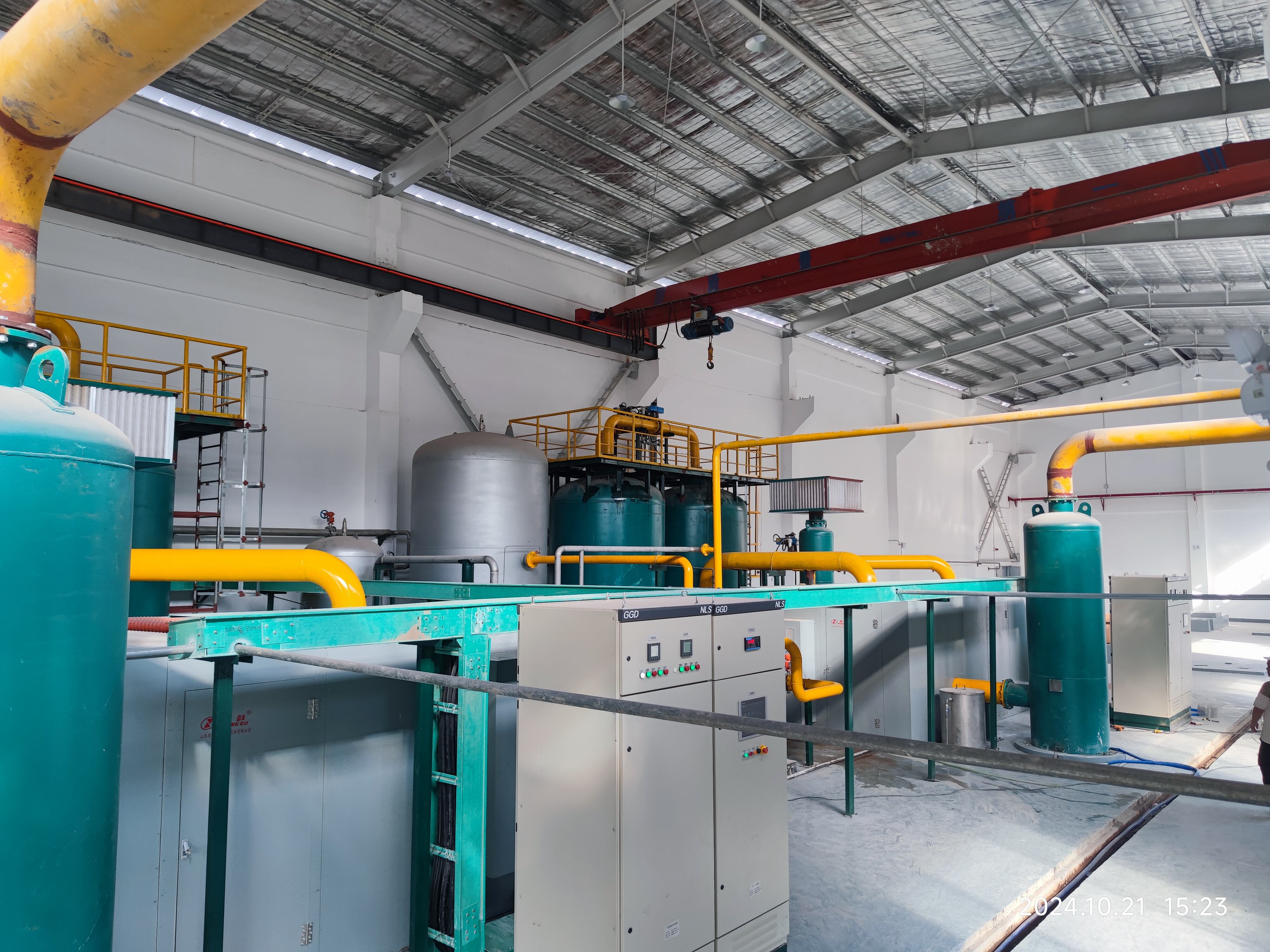система концентратора кисню vpsa
Система концентратора кисню VPSA (Вакуумно-тискове змінне сорбційне розділення) є передовим рішенням для генерації промислового та медичного кисню. Ця інноваційна система використовує спеціальні молекулярні сорбційні матеріали для розділення кисню з навколишнього повітря за допомогою точно контролюваного процесу зміни тиску. Працюючи на принципі селективної сорбції, система VPSA захоплює молекули азоту, дозволяючи кисню проходити, що забезпечує виробництво кисню високої чистоти. Система складається з двох головних сорбційних баків, які працюють по черзі: один виконує процес сорбції, тоді як другий підлягає регенерації. Цей неперервний цикл забезпечує неперервне надходження кисню. Сучасні системи VPSA зазвичай досягають рівня чистоти кисню до 95%, з потужностями виробництва від маломасштабних установок до великого промислового обладнання, що може виробляти кілька тисяч кубічних метрів на годину. Система включає у себе складні механізми управління, включаючи датчики тиску, лічильники потоку та автоматизовані клапанні системи, що забезпечують оптимальну продуктивність та ефективність. Енергоспоживання значно нижче порівняно з традиційними методами криогенного розділення, що робить його економічно вигідним варіантом для різних застосувань. Гнучкість систем VPSA розширюється на багато галузей, включаючи медичні заклади, металургійну переробку, виробництво скла та очищення стічних вод.


